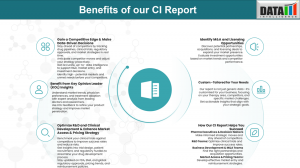Diabetic Macular Edema Treatment 2025: From Monthly Injections to Dual-Action, Longer-Lasting Solutions
DME care is evolving-dual-target biologics, sustained-release systems and AI diagnostics aim to improve vision outcomes, reduce visits, and expand global access
DME management is shifting from frequent injections to smarter, longer-acting therapies. With dual mechanisms and precision diagnostics, the future promises better vision care and fewer appointments.”
AUSTIN, TX, UNITED STATES, June 26, 2025 /EINPresswire.com/ -- Diabetic Macular Edema (DME) is a significant driver of visual impairment among diabetic patients, characterized by swelling in the macula due to leaky retinal blood vessels. Traditional treatment with monthly anti-VEGF injections has been effective but burdensome. Now, the DME landscape is poised for transformation through next-gen dual-action biologics, sustained-delivery technologies, and innovative diagnostics—all aimed at delivering longer-lasting efficacy, reducing patient burden, and improving global access.— DataM Intelligence
🩺 Disease Overview & Patient Impact
DME develops as diabetic retinopathy progresses, leading to increased permeability of retinal capillaries and fluid buildup in the macula. Symptoms include blurred or distorted central vision and vision loss, significantly affecting quality of life. The disease disproportionately affects working-age populations living with diabetes. Early detection and management are essential to prevent irreversible vision changes.
Download Competitive Intelligence Sample PDF: https://www.datamintelligence.com/strategic-insights/ci/diabetic-macular-edema-dme
🌍 Epidemiology & Market Scope
- Prevalence: Among the estimated 537 million adults with diabetes worldwide, around 5–10% develop DME—amounting to over 25 million individuals currently affected.
- Global trends: Rising diabetes rates in North America, Europe, and Asia-Pacific, along with better screening programs, are increasing the potential DME patient base.
- Market size: The global DME treatment market reached approximately USD 4–4.5 billion in 2024, growing at a 5–7% CAGR, fuelled by aging populations, insulin access, and awareness.
💊 Established Treatment Paradigm
1. Anti-VEGF Agents
- Aflibercept (Eylea): Administered every 4–8 weeks after a loading phase; proven to improve visual acuity and reduce edema.
- Ranibizumab (Lucentis): Initially monthly, with possible extension based on response; remains a mainstay therapy.
- Faricimab (Vabysmo): Pioneering dual-action biologic that inhibits VEGF-A and Ang-2, enabling dosing intervals up to 16 weeks.
2. Corticosteroid Implants
- Dexamethasone (Ozurdex): Biodegradable intravitreal implant providing up to 6 months of edema control, with risks such as cataract formation and increased intraocular pressure.
Current standards offer solid outcomes but are accompanied by injection burden, healthcare visit frequency, side effects, and accessibility challenges in lower-resource settings.
Ask for Customized CI Service as per your Business Requirements: https://www.datamintelligence.com/strategic-insights/ci/diabetic-macular-edema-dme
⚙️ Unmet Needs & Pipeline Innovation
Key Challenges to Address:
- Injection frequency leading to compliance issues.
- Recurrence of macular edema during interval breaks.
- Safety concerns with steroids.
- Limited access to advanced therapies in many regions.
Emerging Solutions:
- Long-acting dual-target biologics: Agents building on faricimab’s success but extending durability to 20+ weeks.
- Implants with sustained delivery: Non-biodegradable or refillable systems reducing visits to once or twice annually.
- Bispecifics and trispecifics: Molecules addressing VEGF-A, Ang-2, and inflammation to tackle edema drivers comprehensively.
- Non-invasive diagnostics: AI-enabled OCT imaging and telehealth platforms to flag progression early and reduce disease burden.
These strategies aim to deliver superior outcomes with fewer visits, better safety, and wider accessibility.
🎯 Target Opportunity Profile (TOP)
To compete in the DME market, future therapies should align with:
- Extended Durability: Treatments maintaining visual acuity for 4–6 months or longer.
- Superior Efficacy: Clinically meaningful visual gains comparable or superior to current standards.
- Multimodal Mechanism: Targeting VEGF-A plus additional inflammatory or vascular stability pathways.
- Strong Safety Profile: Low risk of ocular and systemic adverse events, especially pressure and cataract-related.
- Patient Convenience: Injections as infrequent as bi-annual, ideally under local administration.
- Global Accessibility: Scalable delivery systems and cost-effective manufacturing to support emerging markets.
- Digital Integration: Combined with remote monitoring for proactive disease management.
🌟 Competitive Landscape & Leading Companies
The market features a mix of pharmaceutical giants and ophthalmic innovators:
- Roche/Genentech
- Regeneron/Bayer
- Novartis
- Allergan (AbbVie)
- Biotech start-ups forging dual-target molecules or novel delivery systems
Later-stage programs now include trials testing extended durability biologics, sustained-release implants, and AI-driven screening platforms. Biosimilar introductions may also drive affordability.
Book Free CI Consultation Call: https://www.datamintelligence.com/strategic-insights/ci/diabetic-macular-edema-dme
🔎 2025–2030 Market Outlook
- Regulatory approvals expected for faricimab in RVO and DME with extended label use.
- Readouts from extended-duration implant trials may redefine the standard of care.
- Adoption of AI diagnostics to meaningfully shift screening and monitoring patterns.
- Market expansion efforts focus on Latin America, South Asia, and China to address unmet demand.
These trends suggest a future where managing DME means less time in clinics and more time seeing clearly.
✅ Conclusion
Diabetic Macular Edema therapy is undergoing an essential transformation: from monthly injections to longer-lasting, multipronged treatments. Improved efficacy, fewer treatments, enhanced safety, and broader global accessibility are now the focus. Businesses that prioritize these pillars—especially through durable biologics, novel delivery, and AI diagnostics—will shape the next generation of vision care.
Read Related CI Reports:
1. Diabetic Macular Edema | Competitive Intelligence
2. Biosimilars US and EU | Competitive Intelligence
Sai Kumar
DataM Intelligence 4market Research LLP
+1 877-441-4866
sai.k@datamintelligence.com
Visit us on social media:
LinkedIn
X
Legal Disclaimer:
EIN Presswire provides this news content "as is" without warranty of any kind. We do not accept any responsibility or liability for the accuracy, content, images, videos, licenses, completeness, legality, or reliability of the information contained in this article. If you have any complaints or copyright issues related to this article, kindly contact the author above.

